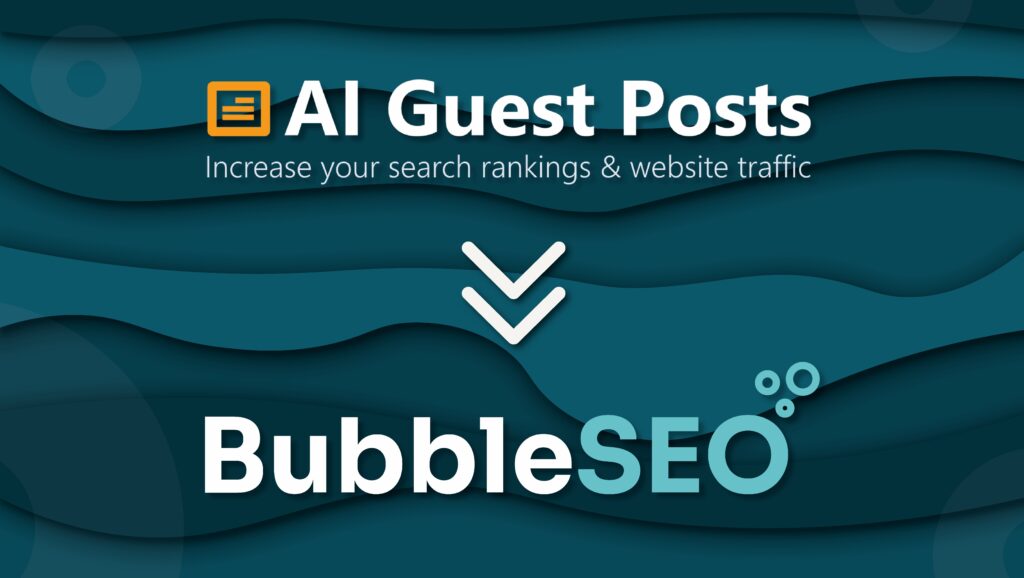
Content marketing research is an essential marketing technique, specifically looking into what should be involved in


In this step of the journey, we are aiming to give you some inspiration for your posts but showing which of our article are bring in the most views!
The 5 articles below are the ones across our 12 brands that have generated the most views so far in 2023. We want to take a look at why these articles are so popular and look at the format of them.



[article_advert]


By analysing these posts, we know that the content is obviously a key factor to engage the audience but other things that could help increase your post views are:
Providing relevant and quality content in your posts is the best way to achieve lots of page views! Good practice when publishing any content is to monitor it to see how well it succeeds and if it needs an extra boost to drive exposure and interest, try to implement some of the above tips into your own content!
Grow your business online with content marketing solutions from Bubble SEO today.
Place An Order
Content marketing research is an essential marketing technique, specifically looking into what should be involved in

With the changing landscape of online content, one of the most crucial aspects of boosting your visibility is mastering the art of keyword selection.

We're excited to announce that AI Guest Posts has undergone a transformative rebranding and is now known as Bubble SEO. This strategic move has allowed the business to develop within the digital landscape and highlight our commitment to providing digital marketing solutions tailored to enhance online visibility and engagement for our customers. Bubble SEO remains dedicated to delivering high-quality, targeted content and effective SEO solutions that align with evolving digital marketing trends. Here is a little more information about our brand and its services. Our services: At Bubble SEO, we specialise in three core services, with content writing being a new feature to the website: Guest Posting: Which aims to enhance your online presence with high-quality guest posts on authoritative websites, driving traffic and boosting your SEO rankings. Link Building: Helps build a robust backlink profile with strategic link building services that improve your website's authority and visibility. Content Writing: Provides engaging content for your audience with compelling content tailored to your brand voice and SEO needs. Benefits of Bubble SEO: We have now made changes to the booking process to simplify this, and updated the customer dashboard section in the hope to improve our existing values below: Enhanced Service Quality: With our rebranding comes a renewed focus on delivering top-notch services that exceed your expectations. Improved User Experience: Our new website offers a streamlined interface, making it easier for you to navigate and access our services. Expanded Network: Benefit from our expanded network of partner websites, ensuring broader outreach and better opportunities for your business. Loyalty Rewards: As a token of our appreciation for the continued support of our bookers, we have now introduced loyalty rewards: Exclusive Discounts: Enjoy special discounts as a loyal Bubble SEO customer, with the more points you acquire, the more exciting offers you will unlock. We're thrilled about this new chapter as Bubble SEO and look forward to continuing to be your trusted partner in achieving your digital marketing goals. Stay tuned for more exciting updates and announcements! Discover the new Bubble SEO and elevate your online presence today! Jennifer Hobson – Digital Marketing [email protected] Heather Ryan – Business Development [email protected]

One of the ways to promote your personal or corporate brands is through guest blogging, also known as guest posting

Understanding the Basics of Links Links are one of the cornerstones of SEO and play a crucial role in how well your website ranks in search engines. Whether you’re adding links to your own blog posts or earning backlinks from other websites, the type of link you use can significantly impact your website’s growth. There are two main types of links you’ll encounter: DoFollow and NoFollow. While the difference between them may seem small, it can have a major effect on your SEO strategy. Let’s break it down. What Are DoFollow Links? A DoFollow link is the standard type of link that allows Google (and other search engines) to crawl, index, and transfer SEO authority—often called “link juice.” Unlike NoFollow links, DoFollow links don’t contain any special HTML attributes. For example: <a href="https://www.bubbleseo.com">Bubble SEO</a> When a reputable website links to you with a DoFollow link, Google interprets that as a vote of confidence. The higher the authority of the linking website, the more positive the effect on your own site’s rankings. For example, if a high-authority site like Moz or Ahrefs includes your link in an article, that trust signals to search engines that your content is valuable and credible. What Are NoFollow Links? A NoFollow link tells search engines not to pass authority to the linked website. In HTML, it looks like this: <a href="https://www.bubbleseo.com" rel="nofollow">Bubble SEO</a> While NoFollow links don’t transfer link juice, they are far from useless. They still allow users to click through and visit your site. More importantly, they make your link profile look natural—because not every backlink should be DoFollow. NoFollow links are commonly used for: Paid advertisements Affiliate links Blog comments User-generated content on forums For example, if you post a link on Reddit or Wikipedia, it will almost always be a NoFollow link. Even though it won’t directly boost SEO authority, it can still drive traffic, build brand awareness, and diversify your backlink profile. Why You Need Both DoFollow and NoFollow Links Many people make the mistake of thinking only DoFollow links matter. While they are essential for building domain authority, relying on them alone can make your backlink profile look unnatural. A healthy SEO strategy includes both types of links: DoFollow links: Boost domain authority and rankings. NoFollow links: Drive referral traffic, build authenticity, and signal to Google that your link-building strategy is natural. Google values authenticity. If all your backlinks are DoFollow, it may look suspicious—potentially raising red flags about manipulative link building. A mix of DoFollow and NoFollow links helps protect your site and ensures long-term growth. Conclusion: Building a Balanced Link Profile When building links for your website, always aim for a natural and balanced mix of DoFollow and NoFollow links. Overusing the same anchor text or stuffing too many links into your content can harm your rankings instead of improving them. At the end of the day, both types of links play a vital role in your SEO strategy. DoFollow links help with authority and rankings, while NoFollow links build authenticity and drive valuable referral traffic. If you’d like expert help creating SEO-friendly content and building a strong backlink profile, explore our content writing services at Bubble SEO. Our professional copywriting team is ready to help you grow your business with content that ranks.

Effective keyword targeting is the cornerstone of successful content marketing. By strategically incorporating the right keywords, you can enhance your SEO, drive traffic, and improve your overall content performance.

Google is known for its constant algorithm updates, with the goal of improving the quality of search results and enhancing the user experience. In 2024, several significant updates have rolled out, impacting how websites are ranked and how marketers approach their SEO strategies. Below, we explore the key changes and what they mean for businesses and digital marketers. 1. Focus on Helpful Content: The "Helpful Content" Update One of Google's core focuses this year has been on promoting "helpful content". The Helpful Content Update prioritises pages that provide real value to users over those stuffed with keywords or created solely for ranking purposes. Google’s AI now does a better job of determining the true intent behind content, rewarding pages that genuinely address user needs. How to Adapt: Audience-Centric Content: Ensure your content addresses user queries comprehensively and prioritises providing answers or solutions rather than just boosting rankings. Remove Fluff: Thin, repetitive, or overly-optimised content can hurt your rankings. Focus on improving the depth and originality of your articles. User Satisfaction Signals: Pay attention to user engagement metrics, such as time on page and bounce rate, as these can indicate how "helpful" users find your content. 2. Enhanced E-E-A-T: Experience, Expertise, Authoritativeness, and Trustworthiness Google has added an extra "E" to E-A-T, now called "E-E-A-T"—"Experience." This addition means Google now considers whether content creators have first-hand experience on the topics they discuss. This change is particularly impactful in areas like health, finance, and other “Your Money, Your Life” (YMYL) niches. How to Adapt: Author Expertise: Ensure content is created or reviewed by individuals with direct experience or expertise in the field. Author Bios and Credibility: Include detailed author bios, qualifications, and links to credible sources that verify the author's expertise. First-Hand Accounts: Incorporate personal experiences, case studies, and testimonials into your content to demonstrate true experience. 3. Page Experience Update: Mobile-First and Core Web Vitals Google continues to push the importance of user experience with updates to its Page Experience metrics, especially emphasising mobile usability and Core Web Vitals. The Core Web Vitals include metrics such as Largest Contentful Paint (LCP), First Input Delay (FID), and Cumulative Layout Shift (CLS), all of which measure the quality of a user’s interaction with your website. How to Adapt: Speed Optimisation: Optimise your website's loading speed, with particular focus on mobile devices. Stability and Responsiveness: Minimise layout shifts that might frustrate users, and ensure that interactive elements are highly responsive. Mobile-Friendly Design: Test your website across various devices and screen sizes to ensure a seamless mobile experience. 4. AI and Conversational Search: Integration of Generative AI Results Google has rolled out more integrations of generative AI and conversational search features into their search engine results. Google's Search Generative Experience (SGE) aims to provide more interactive, AI-driven results that summarise complex queries in a conversational way. This impacts the traditional search result layout and the visibility of featured snippets. How to Adapt: Structured Data Usage: Ensure your website uses structured data to help Google understand your content better and make it more likely to be included in AI-generated responses. Conversational Content: Incorporate a natural, conversational tone into your content, anticipating longer, more complex queries that users might ask AI. Focus on Rich Answers: Create content that answers questions in a concise, authoritative manner to increase chances of being included in AI summaries or rich answers. 5. Spam and Link Quality Updates Recent updates have also focused on cracking down on spammy practices and low-quality link building. Google's SpamBrain AI is better at detecting manipulative link schemes and penalising websites involved in unnatural link practices. It’s clear that Google’s push for higher quality extends to off-page SEO as well. How to Adapt: High-Quality Backlinks: Focus on acquiring backlinks from reputable, relevant sources rather than quantity. Check out Ahrefs’ Guide to Quality Backlinks for strategies. Disavow Low-Quality Links: Regularly audit your backlink profile and disavow any links from spammy or irrelevant sites using the Google Disavow Tool. Avoid Link Manipulation: Avoid engaging in link exchanges, PBNs, or other tactics that could be flagged as manipulative. Conclusion: Staying Ahead of Google Updates Google’s recent updates underscore its commitment to improving user experience, content quality, and combatting spam. SEO professionals and content creators must adapt by prioritising helpful, experience-driven content, optimising user experience metrics, and focusing on high-quality, ethical link-building practices. Staying informed about these changes and continuously refining your SEO strategy are key to maintaining strong visibility in search results. Remember, Google's updates are ultimately aimed at rewarding websites that provide real value to users—so focus on creating the best possible experience for your audience, and you'll stay on the right side of these changes.

Introduction: The Great Debate It’s a common misconception that SEO and social media work against each other. The opposite is true. If a business can master the relationship between social media and SEO, it can significantly boost brand awareness, drive more traffic, and reach new audiences. Let’s explore how these two powerful tools can complement each other. 1. Social Signals: Do They Directly Affect SEO? In 2015, Google’s John Mueller confirmed that social signals (likes, comments, and shares) are not a direct ranking factor in Google's search algorithm. However, they still play an indirect role in SEO. When your content performs well on social media, it can build your brand’s reputation, drive more people to search for your business directly, and ultimately enhance your organic search presence. 2. Driving Traffic with Social Sharing Social sharing involves distributing your website content across your social media platforms. For example, when a new blog post is published, many companies promote it via an Instagram or LinkedIn post. Benefits of social sharing include: Enhanced visibility and reach Increased user engagement and trust Potential for backlink generation (critical for SEO success) While the impact on SEO is indirect, greater visibility and backlinks from shared content can improve your site's performance on Search Engine Results Pages (SERPs). 3. Boosting Link Opportunities Through Social Media It’s tempting to assume that a viral post automatically improves SEO—but that's not guaranteed. When posts go viral, they sometimes get picked up by reputable sources like news outlets or high-authority blogs, creating valuable backlinks that do influence SEO rankings positively. However, if your viral content is mostly shared by small sites with low domain authority, the SEO benefit will be limited. Plus, viral traffic tends to be short-lived—once interest fades, any SEO boost may also decline unless sustainable strategies are in place. 4. Consistency in Branding & Messaging Maintaining a consistent brand voice across all channels is essential for building strong brand recognition. Social media and SEO together offer a powerful way to ensure your messaging remains unified. For example: If you publish a new blog on Monday, you could promote it via social posts throughout the week. Alternatively, you can repurpose content, highlighting key messages in your social posts and linking back to the blog. This reinforces your brand message, helping customers associate your social media activity and website content as part of one cohesive identity. 5. Influencers & UGC: Hidden SEO Benefits Influencer marketing and user-generated content (UGC) can also impact SEO. UGC—like product reviews, social media shoutouts, and unboxing videos—provides authentic, trustworthy content that resonates with audiences. It can also target long-tail keywords and answer specific user queries, improving your website’s relevance and authority in search results. Encouraging customers and influencers to share their experiences not only boosts trust but can also improve your organic visibility. Conclusion: Two Strategies, One Goal Although social media activity doesn’t directly affect SEO rankings, the indirect benefits are undeniable. Social sharing, brand awareness, backlink opportunities, and UGC all contribute to strengthening your online presence. Rather than seeing SEO and social media as separate or competing strategies, businesses should aim to integrate them wherever possible. Together, they are a powerful combination for growing your brand, expanding your audience, and driving long-term success.

Search Engine Optimisation (SEO) is often viewed as a complex and ever-changing field, but its core principles remain constant. If you're looking to increase your website's visibility, generate traffic, and climb the search engine ranks, understanding the foundational elements of SEO is critical. This article will unlock the secrets of SEO, covering essential topics like link building, content marketing, and optimising for search engine rankings. 1. The Foundation of SEO: Why It Matters At its core, SEO is about making your website more visible to search engines like Google, Bing, or Yahoo. The higher your site ranks on search engine results pages (SERPs), the more likely users are to visit your site. Why does this matter? Studies show that over 75% of users never scroll past the first page of search results, making it crucial to rank as high as possible. 2. The Power of Content Marketing Content marketing is a central part of any successful SEO strategy. Search engines prioritise websites that regularly publish high-quality, relevant content. This not only helps with ranking but also establishes your brand as an authority in your industry. Focus on High-Quality Content: Google’s algorithms reward websites that produce in-depth, well-researched content. Blogs, case studies, infographics, and videos that provide real value to your audience are more likely to rank well. Consistency is Key: Regularly updating your website with fresh content signals to search engines that your site is active and valuable. Use Targeted Keywords: When creating content, make sure to incorporate keywords that your audience is searching for. Tools like SEMrush or Google Keyword Planner can help identify relevant keywords with high search volume. 3. Link Building: The Backbone of SEO Link building is one of the most important ranking factors for search engines. It involves getting other reputable websites to link back to your content, signaling to search engines that your site is authoritative and trustworthy. Earn Quality Backlinks: Focus on earning backlinks from credible, high-authority sites within your industry. Guest posting on blogs, securing mentions in industry publications, and creating shareable resources are great ways to attract backlinks. Avoid Low-Quality Links: Links from spammy or irrelevant sites can harm your rankings. Always aim for quality over quantity when building links. Internal Linking: Don’t overlook the power of internal links. By linking to other relevant pages on your website, you improve your site’s structure, making it easier for both users and search engines to navigate. 4. On-Page SEO: Optimising Each Page On-page SEO involves optimising individual pages on your site to help search engines understand and rank your content. Title Tags and Meta Descriptions: Your title tag is one of the first things search engines and users see. Make sure your primary keyword is included. Meta descriptions, while not a direct ranking factor, improve click-through rates when they are engaging and relevant. Headers (H1, H2, H3): Break your content into readable sections using headers, which help both users and search engines digest the material. Image Optimisation: Use descriptive alt text for images and compress them to ensure your page loads quickly, another critical ranking factor. 5. Technical SEO: Enhancing Site Performance Beyond content and links, technical SEO is crucial for ensuring your site is easy to crawl, secure, and optimised for all devices. Mobile Optimisation: As more users search on mobile devices, Google now considers mobile-friendliness a key ranking factor. Use responsive design to ensure your site looks great and functions well on mobile. Site Speed: Slow-loading sites frustrate users and are penalised by search engines. Tools like Google PageSpeed Insights can help you improve load times. Crawlability and Indexing: Make sure your site is easy for search engines to crawl and index. Submit an XML sitemap to Google Search Console, and fix any errors that may block search engines from accessing your content. 6. Search Engine Ranks: Climbing the SERPs The ultimate goal of SEO is to rise to the top of search engine ranks. But getting there takes time, effort, and the right strategy. Track Your Progress: Use tools like Google Analytics, Moz, or Ahrefs to monitor your search rankings and track organic traffic over time. This will help you identify what’s working and what needs improvement. Competitor Analysis: Regularly check in on your competitors to see how they’re performing in search results. Understanding their strategies can reveal opportunities for your own SEO improvement. Continuous Optimisation: SEO isn’t a one-time task—it requires regular adjustments. Keep up with the latest trends and algorithm updates to ensure your site remains optimised for long-term success. 7. The Future of SEO SEO is always evolving, and staying ahead of the curve is crucial for maintaining your search rankings. With the rise of artificial intelligence, voice search, and new ranking factors like Core Web Vitals, it’s more important than ever to stay informed about SEO developments. Focus on user experience, creating valuable content, and building authoritative links to future-proof your SEO strategy. Conclusion SEO doesn’t have to be a mystery. By focusing on key areas like content marketing, link building, and technical SEO, you can unlock the secrets to improving your search engine rankings. SEO is a long-term investment, but with a clear strategy and consistent effort, you’ll start seeing the rewards in higher rankings, increased traffic, and greater visibility for your brand. Master the essentials of SEO today and watch your website soar to new heights!

Guest posting—also known as guest blogging—is the process of writing an article and having it published on another company’s website. It’s a tried-and-tested method used by marketers and business owners to build backlinks, improve visibility in search engine results, and grow brand credibility. At its best, guest posting offers real value to readers and allows you to position your brand as a trustworthy voice within your industry. But there’s more to it than just writing a blog and getting a link—when done strategically, guest posting can significantly boost your long-term SEO success. Why Guest Posting Still Works Search engines, especially Google, use backlinks as one of their most influential ranking factors. When your website is linked to by other authoritative sites, it sends a strong trust signal that your content is worth recommending. Done properly, guest blogging can: Drive targeted traffic from relevant audiences. Strengthen your domain authority. Increase brand awareness within your sector. Help new customers discover your services. But quality is everything. A random backlink on a low-effort blog won’t get you far. In fact, it could do more harm than good. What matters most is context, credibility, and consistency. The Right Way to Approach Guest Posting To get real results, guest posting should never be treated as a numbers game. Focus instead on thoughtful placements, authentic content, and genuine value. 1. Relevance Above All Your guest posts should always appear on websites that relate to your industry or subject matter. If you’re in digital marketing, for example, aim to post on blogs that cover marketing trends, advertising, or online business—not random lifestyle or travel blogs. Search engines look closely at the context surrounding your link. If it doesn’t match the content of the site, it won’t carry the same weight. Google calls this “topic relevance”, and it’s increasingly important in how your link is valued. 2. Think Quality, Not Just Authority It’s easy to get caught up chasing high Domain Authority (DA), but a more modest DA score on a hyper-relevant site is often more powerful than a link from a huge but unrelated platform. Ideally, go for both—but if you have to choose, always lean into relevance and audience match. 3. Keep It Natural Backlinks should feel like a natural part of the article. Avoid stuffing in keywords or using exact-match phrases repeatedly. Write as you would for any blog reader—clear, conversational, and informative. Your goal is to educate or entertain, not to force a sales message. Over-optimised anchor text can lead to penalties under Google’s Link Spam Update. 4. Make Every Article Unique Avoid reposting the same article on multiple sites. Doing so can lead to duplicate content issues—Google may ignore the links and consolidate ranking signals instead of giving credit to each version. Learn how duplicate content works and how to avoid it in this comprehensive guide by Backlinko. Customising your content for each website—based on their tone, audience, and layout—makes a noticeable difference. It shows respect for the host site and results in better engagement. What to Avoid in Guest Posting Like any marketing tactic, guest posting has its pitfalls. Here are a few common mistakes that can reduce its effectiveness or even get your site penalised: Mass Submissions of Generic Content Sending out the same article to a dozen websites may seem efficient, but it rarely delivers value. It can also damage your credibility if multiple identical versions are live at once—and risks triggering Google’s spam filters. Focusing Only on Domain Metrics A DA of 70 is impressive—but not if the site has nothing to do with your industry. Google wants to see links from relevant sources, not just powerful ones. That’s why context always matters more than metrics alone. Keyword Stuffing Trying too hard to optimise every sentence can backfire. Keep your language clear and natural, and limit yourself to one or two anchor links per post. Keyword stuffing is listed as a black hat SEO tactic and can lead to penalisation. Ignoring Editorial Standards Sites that accept guest contributions often have their own tone, style, and expectations. Ignoring these can lead to rejections—or worse, a published article that feels awkward and out of place. Following editorial guidelines shows professionalism and increases your chances of repeat opportunities. The Long-Term Value of Guest Posting Guest posting isn’t about chasing short-term wins—it’s a long game. It takes time to build up a network of quality backlinks and meaningful content placements, but the impact can be significant. As your site gains more authority, you’ll start to notice: Improved keyword rankings. More organic traffic from Google. Greater visibility across your niche. A stronger reputation as a trusted voice. It’s also worth noting that guest posts can continue to bring in traffic and engagement long after they’re published—especially if they’re well-written, evergreen, and hosted on reputable sites. Final Thoughts: Strategy First, Always The key takeaway? Relevance and authenticity beat volume and vanity metrics every time. At Bubble SEO, we specialise in strategic guest posting that puts your brand in front of the right audience. With access to 11 respected publishing platforms across a variety of sectors, we can help place your content exactly where it needs to be—without cutting corners. If you’re ready to take your content strategy up a notch, get in touch with our team. Let’s build your visibility the smart way.